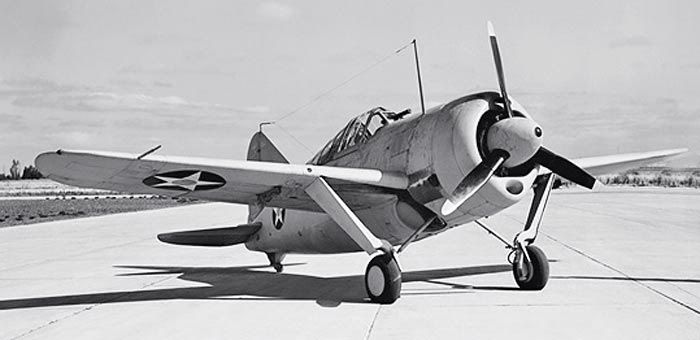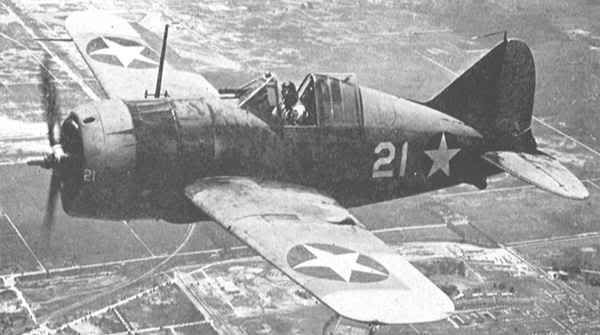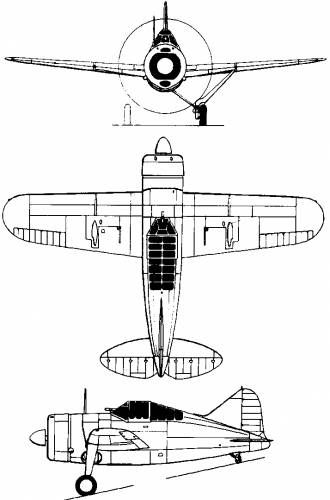
 |
|
|||||||
| IL-2 Sturmovik: Birds of Prey Famous title comes to consoles. |
|
|
Thread Tools | Display Modes |
|
#20
|
|||
|
|||
|
Nice idea. You can edit the first post and include a plane list that we know
Watched in Trailer Brewster F2A Buffalo General characteristics Crew: One, pilot Length: 26 ft 4 in (8.03 m) Wingspan: 35 ft 0 in (10.67 m) Height: 12 ft 0 in (3.66 m) Wing area: 209 ft² (19.4 m²) Empty weight: 4,732 lb (2,146 kg) Max takeoff weight: 7,159 lb (3,254 kg) Powerplant: 1× Wright R-1820-40 Cyclone 9 nine-cylinder single-row air-cooled radial engine, 1,200 hp (895 kW) Performance Maximum speed: 321 mph (279 knots, 517 km/h) at 16,500 ft (5,030 m) Cruise speed: 161 mph (140 knots, 259 km/h) Range: 965 mi (839 nmi, 1,554 km) Service ceiling: 33,200 ft (10,600 m) Rate of climb: 2,440 ft/min[N 9] (744 m/min) Armament Guns: 2 × 0.50 in (12.7 mm) nose-mounted M2 machine guns 2 × 0.50 in (12.7 mm) wing-mounted machine guns The Brewster F2A Buffalo was an American fighter aircraft which saw limited service early in World War II. Though the Buffalo won a competition against the Grumman F4F Wildcat in 1939 to become the US Navy's first monoplane fighter aircraft, it turned out to be a big disappointment. Several nations, including Finland, Belgium, Britain and the Netherlands, ordered the Buffalo to bolster their struggling air arms, but of all the users, only the Finns seemed to find their Buffalos effective, flying them in combat with excellent results.[1] During the Continuation War of 1941–1944, the B-239's (a de-navalized F2A-1) operated by the Finnish Air Force proved capable of engaging and destroying most types of Soviet fighter aircraft operating against Finland at that time, achieving, in the first phase of that conflict, a kill-ratio of 32:1, 32 Soviet aircraft shot down for every B-239 lost[2] and producing 36 Buffalo "aces".[3] When World War II began in the Pacific[4] in December 1941, Buffalos operated by both British Commonwealth (B-339E) and Dutch (B-339D) air forces in South East Asia suffered severe losses in combat against the Japanese Navy's Mitsubishi A6M Zero and the Japanese Army's Nakajima Ki-43 "Oscar". The British attempted to lighten their Buffalos by removing ammunition and fuel and installing lighter guns in order to increase performance, but it made little difference.[4] The Buffalo was built in three variants for the U.S. Navy, the F2A-1, F2A-2 and F2A-3. (In foreign service, with lower horsepower engines, these types were designated respectively, B-239, B-339, and B-339-23.) The F2A-3 variant saw action with United States Marine Corps (USMC) squadrons at the Battle of Midway. Shown by the experience of Midway to be no match for the Zero, the F2A-3 was derided by USMC pilots as a "flying coffin."[5] The F2A-3, however, was significantly inferior to the F2A-2 variant used by the Navy before the outbreak of the war. source: Wikipedia   
|
|
|